Pane – Giuliano Pediconi
“The recipe is the least important component; it is a guideline which allows for many variations. When the water and flour are mixed they begin a new life cycle”.
Always add the salt at the end of the mixing, helps to keep the dough tender
Malt is needed in the Grissini and is used in many recipes to help stimulate fermentation and helps to keep the items crispy, not chewy or gummy.
The temperature during mixing is very important, the dough should not heat up, it can change the texture of the final product. Cold water can be used to control mixing temperature.
· Temperature of the flour – can’t control, is room temp generally
· Ambient Temperature – can’t control
· Temperature of the water – can control – you can adjust based on the final mixing temp you are looking for.
A Biga was used for many of the recipes we made. The chef’s basic Biga was:
1. 1 Kg – High Protein Flour -like Manitoba
2. 10g – Fresh Yeast
3. 450g – Water
· Mix and cover with towel and let lit out for 15 to 24 hours –Than use.
Biga is an mixture made from flour, water and yeast. It is made up each time for a loaf of bread -- it is not meant to be reserved and carried over, as is done for a sourdough starter. The Biga is the first part of the ingredients for your bread, then to it you add more flour, water, etc. It provides good flavor to bread, and helps the final product to retain moisture and freshness longer.
Manitoba – Flour This comes as both a 0 and 00 flour. Made from the Manitoba variety of hard wheat, as grown in Canada and the States, it has a high protein content. Basically a strong, highly-refined white bread flour, it is mostly used as a flour to strengthen other flours.Substitutes:If you are making bread: in North America, some suggest 3 parts all-purpose flour to 1 part cake flour; Bread (strong) flour on its own is probably pretty much too strong for almost any Italian recipe. The absolute highest protein content you'd want in a flour for Italian bread would be 12 to 12.5%, tops (Practically Edible.com).
We made:
· Focaccia Pugliese – what made this a Puglia Style focaccia is that it uses Potato Flakes (or fresh) and a small % of Semolina Durum Wheat with the flour. Malt was also used. The bread is topped prior to baking with EVO, tomatoes that are torn into pieces by hand-so the juices drip into the dough, oregano, and salt.
· Focaccia di Recco from Genoa – this dough was stretched very thin like strudel dough and laid in a large pan, than prosciutto cotto and Crescenza cheese(semi soft, slight tang) were placed on the dough. Then a top layer of the thin dough was laid over the ham and cheese. It was brushed with milk, a couple small vent hole poked in the top, and baked at a high temperature. It needs to eaten when hot out of the oven. The chef stated that this expensive to by in Genoa. It was good.
· Pane Marchigiano – Marche Style Bread –made with a Biga- straight forward round loaf- crusty on the outside and tender in the center-good.
· Pane alle Noce – Bread with Walnuts – small amount of Biga added-about golf ball size, white flour mixed with 10% whole wheat , and a small amount of graham flour, butter added a piece at a time like for Brioche. Can make variations with the flavorings. We made some with anchovies. We rolled them nut shaped. Tasty.
· Pane Con Grano Spezzato E Farina di Farro – Spezzato is broken wheat or coarse ground unrefined wheat. The chef poured hot water 1500kg on the Grano Spezzato 1 kg and once it cooled some he mixed in 3 grams brewers yeast and let it sit out over night. The next day we mixed in 1250g Flour, 250g,Spelt Flour, 1500g Biga, Malt, Salt and Water. We made braided loaves. The bread had a great nutty taste, crisp outside and tender middle. It was good whole grain bread!
· Pan Brioche – Standard Brioche 1000g flour with the addition of 20% Biga and 1% Malt – Great flavor, texture and crumb
· Pane Mandorle Ricotta Limone – Almond, Ricotta, and Lemon Bread – made with 1000g flour, bran 6%, ricotta, 20%, butter 7%, almonds 25%, Biga 20%, Malt 1%, milk, honey, candied lemon zest and compressed yeast. We made inot flowers and roses. These had a great taste and texture. You could eat them with butter and honey. Or they would be great to use to accompany a cheese course!
· Grissini Stirati – great bread stickes, Marche style. They are pulled, not rolled or twisted, like ones in the Piedmont region. The twisted ones are more dry. 1000g Flour, EVO 4%, Malt 1.5 %, H2o 55%, salt 2%,yeast 1%, Struttto (lard) 4%. Once proofed some were sprinkled with cornmeal, and some with a mix of parmesan and sesame seeds, then cut and pulled. Proofed again and baked. Very crispy and really tasty. I have been eating them for two days know and they are great!
· Pane Pomodoro e Ricotta – 1250g Flour, 24% Biga, 5% sugar, 20% ricotta, 28% Pureed Tomato,16% EVO, 8% water, 4% milk, 4%yeast, 2% salt – Standard mixing. We cut rolled and tied in a knot. These were very good. Nice texture and great flavor.
· Maritozzi – Pane Dolce of the Marche region. They are usually prepared for festive occasions eapecially Fathers Day. Maritozzi means close to one another, like being married. When these are panned up the are placed close to each other so when they bake the are touching. After baking you tear them apart so the sides of the bread is white from being torn from the one next to it. You start these with 200gmilk, 50g yeast, and 20g sugar and let triple. Then mix in 1000g flour, 30% eggs, 1% malt, 3% yeast, 20% sugar, 25% butter, 2% salt, orange zest, 30% raisins rehydrated with rum. Make like brioche, mix dough and slowly add in butter. When baking brush tops with a thick simple syrup to turn white and add more sweetness. These came out really tender, soft, and great to eat. They make a great dessert, or a sweet breakfast bread.
· Ciabatta Pomodoro E Grano Spezzato – a nice full flavored ciabatta (means flip-flop), with a super crusty exterior and a light tender interior, a really good ciabatta. Much more tender than ones in the generally found in the states. 2 x Biga from above, 300g Flour, 350g Tomato Paste, 230g Grano Spezzato, 25g Malt, 6g yeast, 50g salt, 150g EVO, 800g water. Mix Biga and dry ingredients and slowly mix in oil and water, alternating each as they are absorbed. The dough is very soft, and it must remain smooth while you are adding the oil and water. Proof, cut and line cut side up on a table cloth with a lot of semolina dusted on it, cover and let proof. Very gently flip them over onto baking pans and bake.
I had dreams of bread last night – Pane, Pane, Pane!
Subscribe to:
Post Comments (Atom)











































































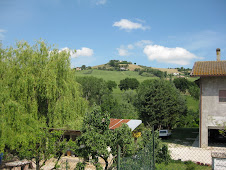

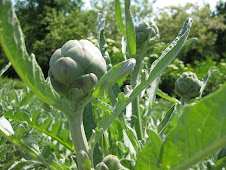


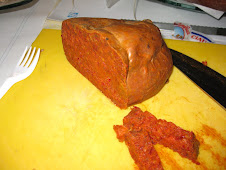
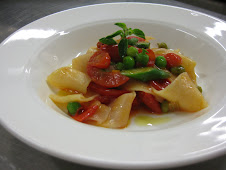
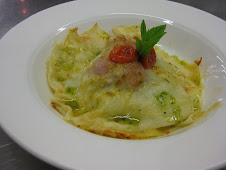
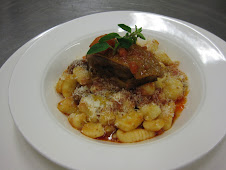








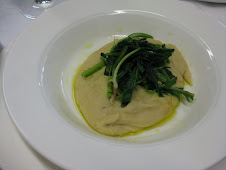

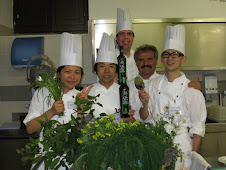
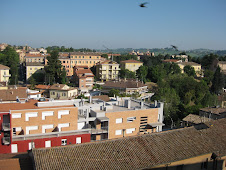


3 comments:
Joe - Awesome blog! We love the details in your postings, and we can almost taste the photos. -Bosky Acres
Looks amazing I'm feeling inspired! I too have dreams of making bread. Can't wait to try some of the new tricks you've learned.
Born Yank-not sure who this is, but we can bake some of these great breads when I return!
Michelle-Thanks for checking out the blog=I hope it is going great!
Post a Comment